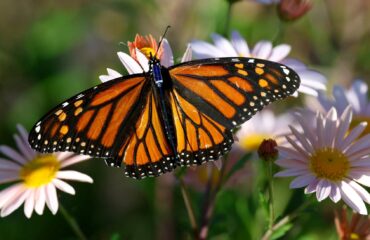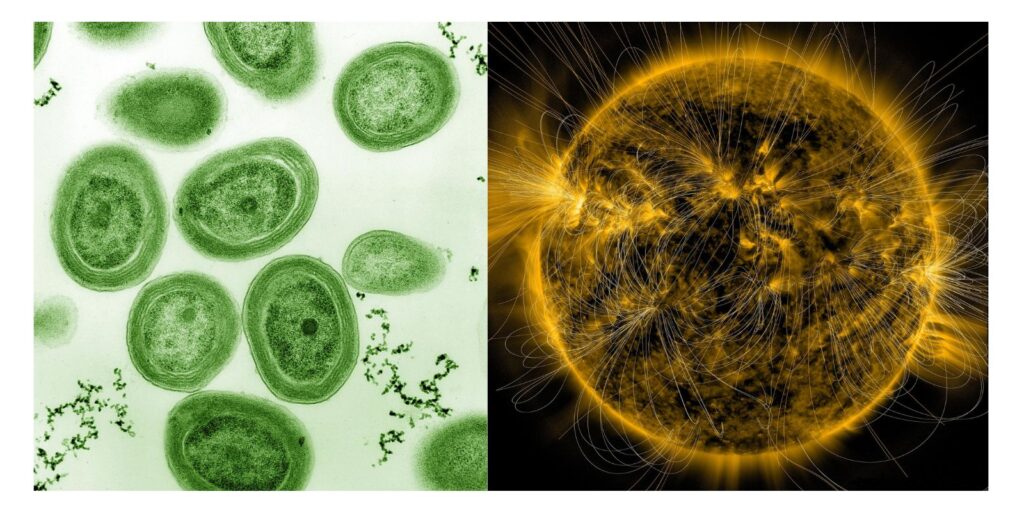
The image on the left is a microscopic view of a species of marine cyanobacteria that contribute a significant amount of primary energy production used by living organisms in the oceans. The Sun is shown on the right, in an image taken in 2016 with an overlaid illustration of the star’s magnetic lines. Image on left by Luke Thompson of Chisholm Lab and Nikki Watson from Whitehead, MIT, on Wikipedia ; Image on right by NASA.
By James Myers
A recent experiment demonstrates that the changes of Earth’s seasons are sensed by more than human, animal, and plant life. Even single-celled bacteria, like cyanobacteria that were used in the experiment, react to the four seasonal changes on Earth for some surprising and some still-unknown reasons.
Living organisms, including bacteria, require energy to operate, but the amount of energy that the Earth receives from the Sun varies by season. Cyanobacteria that power themselves through photosynthesis, which converts the Sun’s energy for cellular operation, suffer a decrease of energy in winter months.
In the experiment, as they sensed a reduction in energy the cyanobacteria began to prepare themselves for winter. To improve their chance of survival, they activated a set of “seasonal” genes to change their molecular composition and cell membranes so as to live with less energy.
The shortest days of the year for sunlight occur during the winter months, and it seems the bacteria could sense a day’s changing length as a trigger to prepare for a seasonal change.
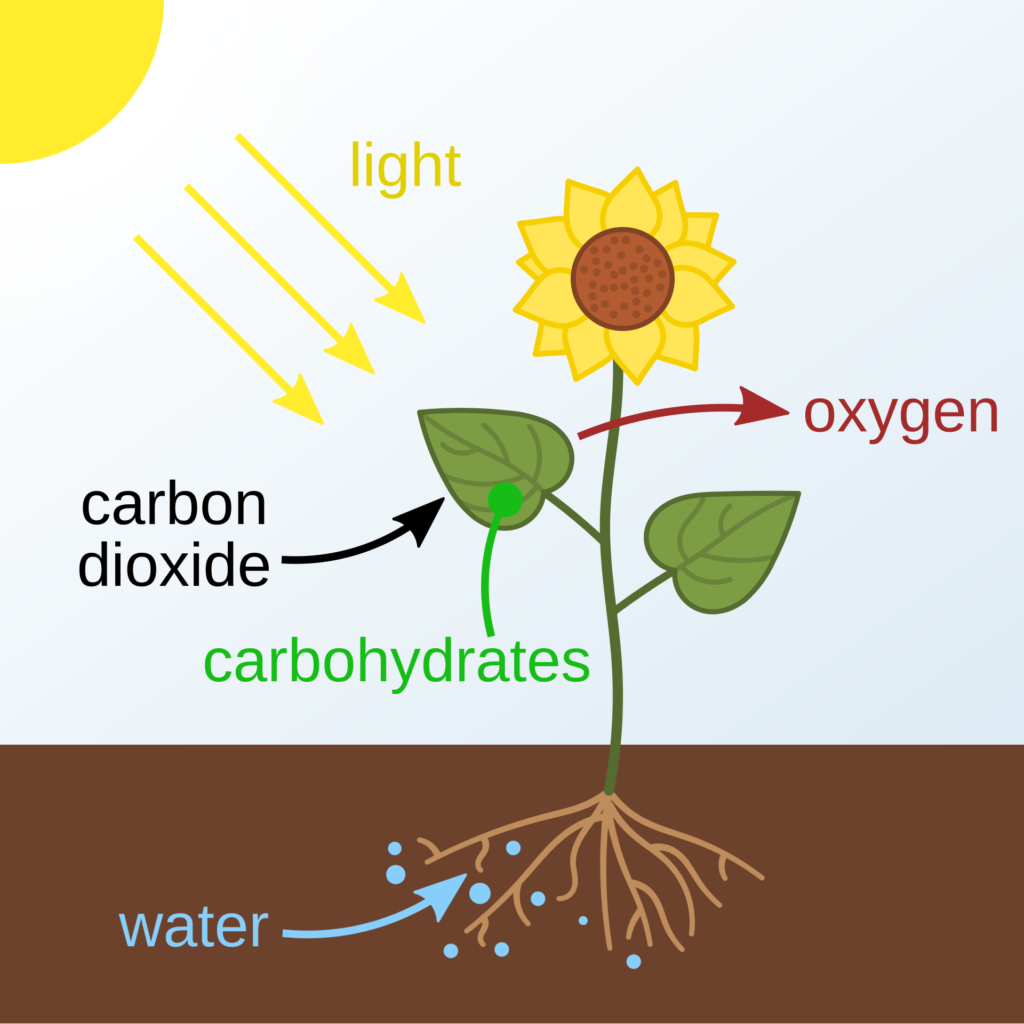
Illustration of photosynthesis in a plant, which releases oxygen and synthesizes energy from the Sun in the form of carbohydrates that power the plant. Image: Wikipedia
Earth’s four seasons are governed by the way the planet tilts on its orbital axis at an angle of close to twenty-three degrees as it makes its 365.2564-day journey around the Sun.
This tilting exposes one of the planet’s two hemispheres more directly to the Sun’s energy, while the other hemisphere receives the Sun’s rays more obliquely, experiencing less light and shorter days. Earth’s orbital mechanics result in four seasons in both of the planet’s two hemispheres, with each hemisphere being in the opposite season of the other. When the northern hemisphere experiences the shortest day of the year at the winter solstice on December 21, the southern hemisphere is at the peak of its summer and longest day.
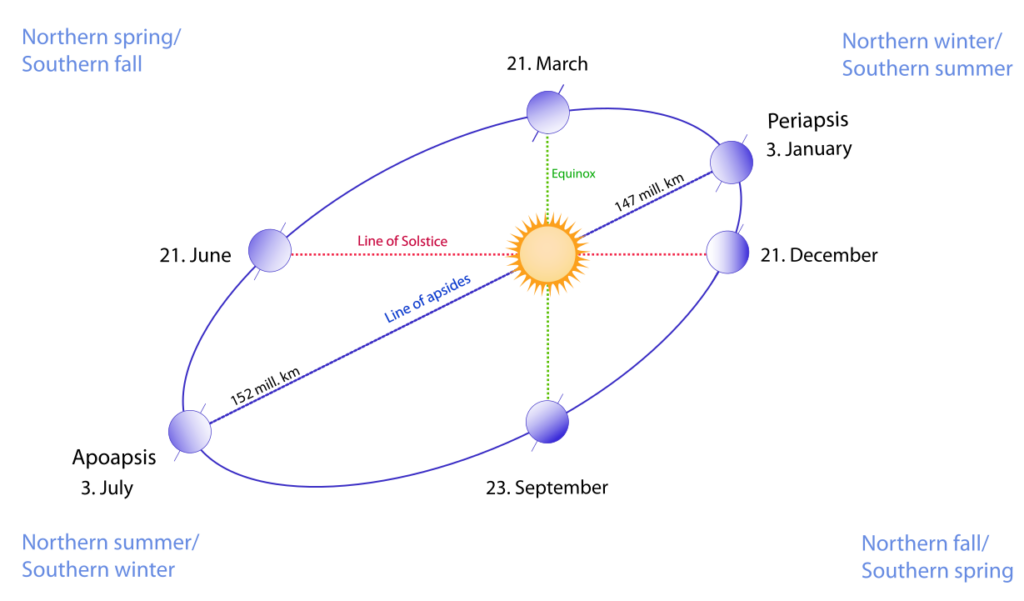
“Exaggerated illustration of Earth’s elliptical orbit around the Sun, marking that the orbital extreme points (apoapsis and periapsis) are not the same as the four seasonal extreme points, the equinox and solstice.” Image and caption: Wikipedia
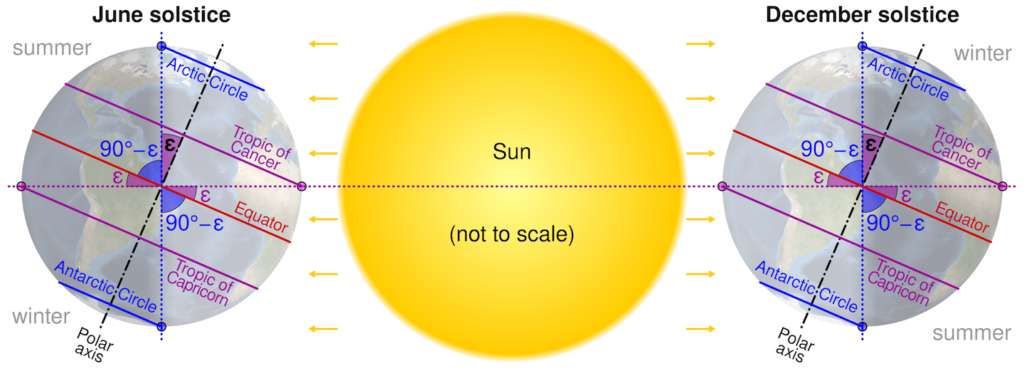
Earth’s tilt at approximately 23 degrees to the axis of its orbit around the sun creates four seasons in two hemispheres. Image: cmgee, NASA, on Wikipedia .
Luísa Jabbur, who is a microbial chronological biologist and lead author of the paper entitled Bacteria can anticipate the seasons: photoperiodism in cyanobacteria, told Quanta Magazine, “It seemed like a very nonsensical idea to think that bacteria would care about something that’s happening on a scale that’s so much bigger than their lifetime.”
However, since each cyanobacterium cell clones itself by dividing in half, the reproductive process is repeated limitlessly with each generation passing on information to its offspring. Even though the cyanobacteria live very short lives, seasonal information appears to be encoded in their DNA for the benefit of subsequent generations and their ability to survive seasonal changes.
Carl Johnson, another of the paper’s authors, likened the cyanobacterium’s seasonal process to the monarch butterfly that migrates thousands of kilometres at summer’s end from the cooling northern regions to warmer southern areas. Since the monarch’s life is short, with an adult living five weeks or less during breeding season, the migrating butterflies never make the return journey at winter’s end – their offspring do that.
Chronobiology is uncovering new information about circadian rhythms
Chronobiology is a developing branch of biological studies focussing on the responses of living organisms to time and the resulting rhythms in biological actions. Chronobiology has contributed to other disciplines, including medicine and psychiatry, with respect to human circadian rhythms that control our sleep-wake cycle, core body temperature, and mood.
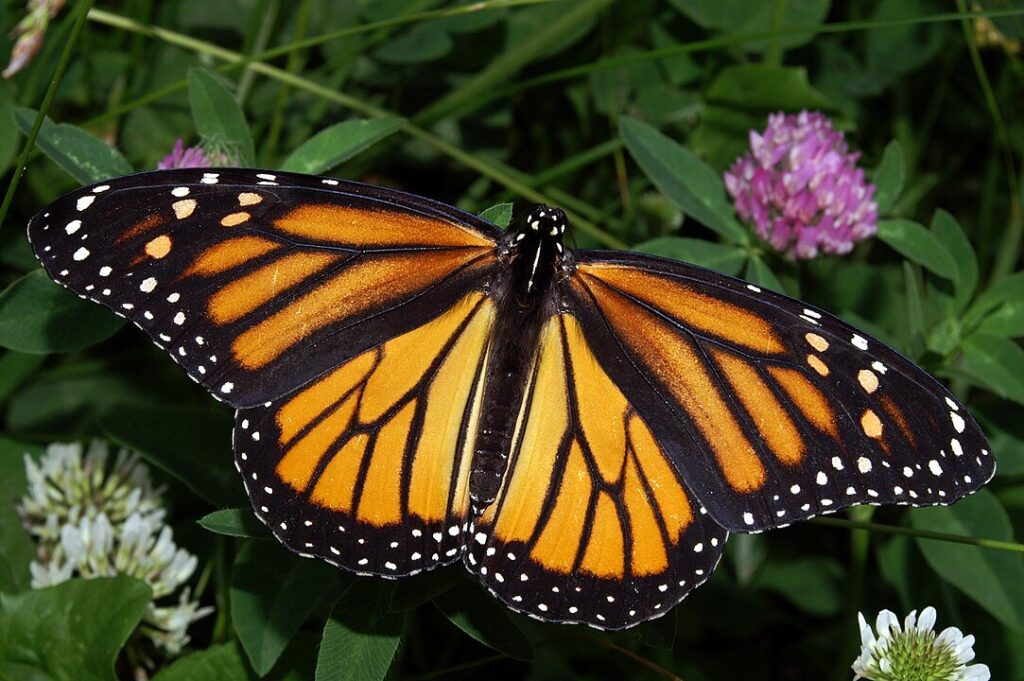
The monarch butterfly navigates with directional cues from sunlight. Image: Wikipedia
Not all members of the same species behave the same way in response to time changes.
For example, not all monarch butterflies make an annual long-distance migration; individuals living in Central and South America remain in the same region regardless of season. To escape harm from the cold of northern climates, however, monarch lineages from areas like North America have adapted stronger flight muscles to facilitate the long migratory flight, and they use a compass-like mechanism for navigation during the journey.
The butterfly’s eye picks up directional cues from sunlight, including the polarization of ultraviolet light and differing wavelengths that cause changes in light colour. The monarch has two circadian clock mechanisms, one located in the antennae that adjusts for time zone differences during migration, and the other located in the brain that senses decreasing daylight in the fall to initiate migration.
The cyanobacteria’s circadian clock is the most studied of all organisms.
A 1998 paper co-authored by Carl Johnson revealed that the cyanobacterium’s circadian clock consists of three genes and their corresponding proteins. Two of the proteins interact with the third, causing the bacterium to gain phosphate which it then sheds rhythmically with light changes between day and night. The discovery contributed to understanding the cellular mechanisms for circadian rhythms.
When Jabbur, Johnson, and the other experimenters eliminated the three circadian clock genes, the cyanobacteria failed to adjust the composition of their cellular membranes. When the genes operate naturally, they deplete water in the membrane that provides dryer cells with greater range of motion during colder months. This is just one example of how nature equips organisms with the capability of seasonal adaptation for survival.
Chronobiologists are actively studying a wide range of time response mechanisms in living organisms, from humans to bacteria.
For instance, the Canadian Society for Chronobiology consists of numerous labs that explore subjects like clock-regulated transcription factors in zebrafish, the connection between circadian rhythms and immune responses in mice and humans, and countermeasures for night shift workers to combat sleepiness.
While the nature of time itself remains one of the greatest scientific mysteries, increasing knowledge of the ways that natural organisms at all scales interact with time is yielding some important clues.
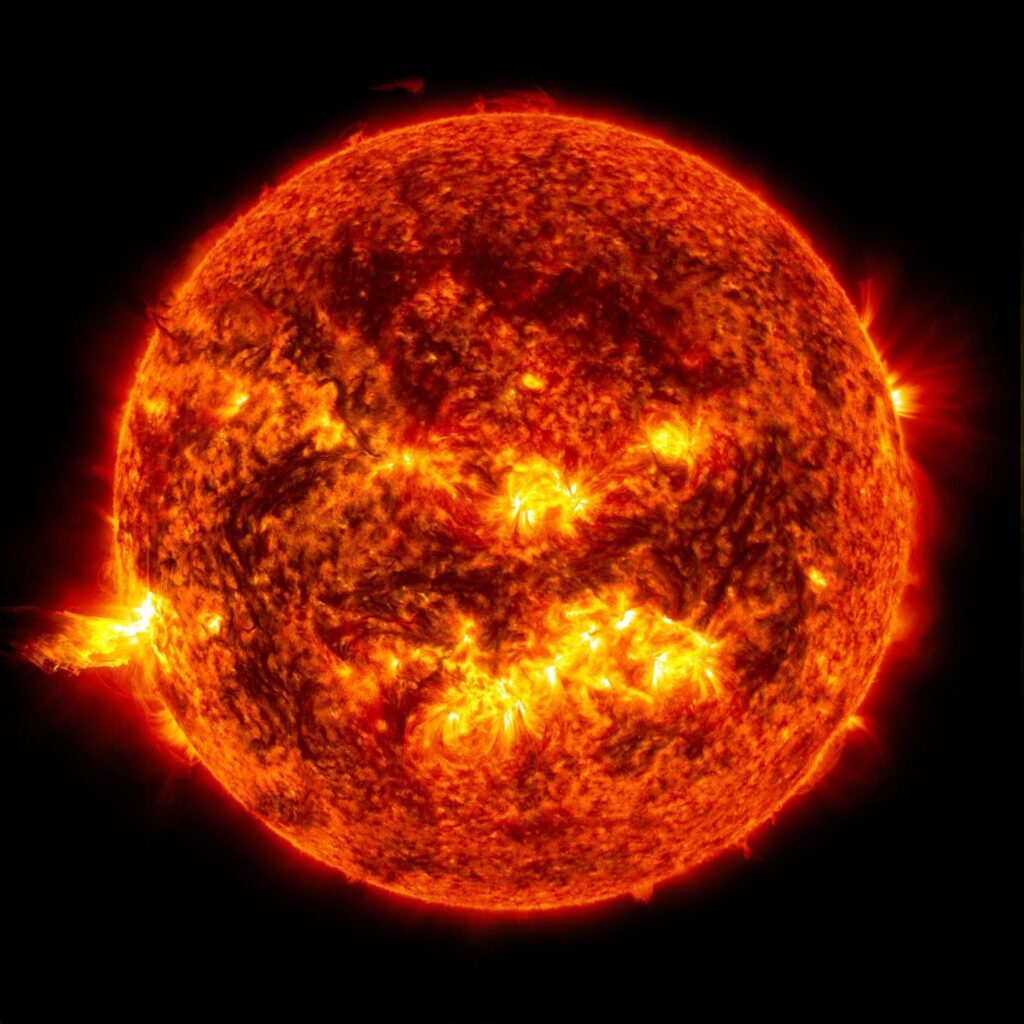
The Sun, imaged in 2013, showing solar flare activity. Image: NASANASA
The discovery of seasonal change mechanisms in short-lived single-celled cyanobacteria is important evidence of the fundamental ability of all living species to coordinate themselves with the single arrow of time that all living species experience. The time-coordination methods each species uses differ based on physiology and other factors, but the result is the same: we all respond to seasonal increases and decreases in the Sun’s energy.
Craving more information? Check out these recommended TQR articles:
- Is There a Looming Digital Divide With Quantum Technology?
- Growing Up Online: Evolving Protections for Children in the Digital World
- Will We Find a Universal Memory for All Physical Scales, From the Tiny Quantum to Giant Stars, in the Geometry of Curves?
- Protecting Sensitive Financial Information From Data Brokers is a Crucial Government Responsibility
- From Stellar Clusters to Cosmic Horizons: Telescopes are Mapping the Edge of the Observable Universe
- Negative Time: Another Curious Wrinkle in the Always Surprising Quantum Universe
Your feedback helps us shape The Quantum Record just for you. Share your thoughts in our quick, 2-minute survey!
☞ Click here to complete our 2-minute survey



